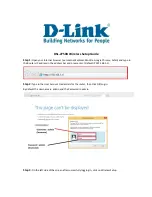
OEM Installation Guidance Document
For Broadcom 802.11a/g/n/ac WLAN + Bluetooth PCI-E Custom Combination Card
BCM94360CD
FCC ID: QDS-BRCM1070; IC: 4324A-BRCM1070
Page 1 of 9
Conditions on using BRCM regulatory approvals:
A.
Customer must ensure that its product (the “CUSTOMER Product”) is electrically
identical to Broadcom’s reference designs. Customer acknowledges that any
modifications to Broadcom’s reference designs may invalidate regulatory approvals in
relation to the CUSTOMER Product, or may necessitate notifications to the relevant
regulatory authorities.
B.
Customer is responsible for ensuring that antennas used with the product are of
the same type, with same or lower gains as approved and providing antenna reports to
Broadcom.
C.
Customer is responsible for regression testing to accommodate changes to
Broadcom’s reference designs, new antennas, and portable RF exposure safety
testing/approvals.
D.
Appropriate labels must be affixed to the CUSTOMER Product that comply with
applicable regulations in all respects.
E.
A user’s manual or instruction manual must be included with the customer
product that contains the text as required by applicable law. Without limitation of the
foregoing, an example (for illustration purposes only) of possible text to include is set
forth below:
1.
USA—Federal Communications Commission (FCC)
FCC COMPLIANCE STATEMENT:
This device complies with part 15 of the FCC Rules. Operation is subject to the following
two conditions:
(1) This device may not cause harmful interference, and (2) this device must accept any
interference received, including interference that may cause undesired operation.
INFORMATION TO USER:
This equipment has been tested and found to comply with the limits for a Class B digital
device, pursuant to Part 15 of FCC Rules. These limits are designed to provide reasonable
protection against harmful interference in a residential installation. This equipment
generates, uses, and can radiate radio frequency energy. If not installed and used in
accordance with the instructions, it may cause harmful interference to radio
communications. However, there is no guarantee that interference will not occur in a
particular installation. If this equipment does cause harmful interference to radio or
television reception, which can be determined by tuning the equipment off and on, the



























